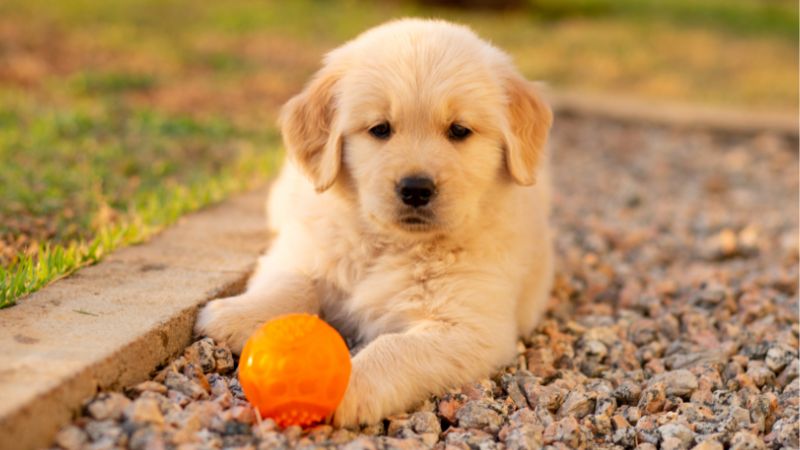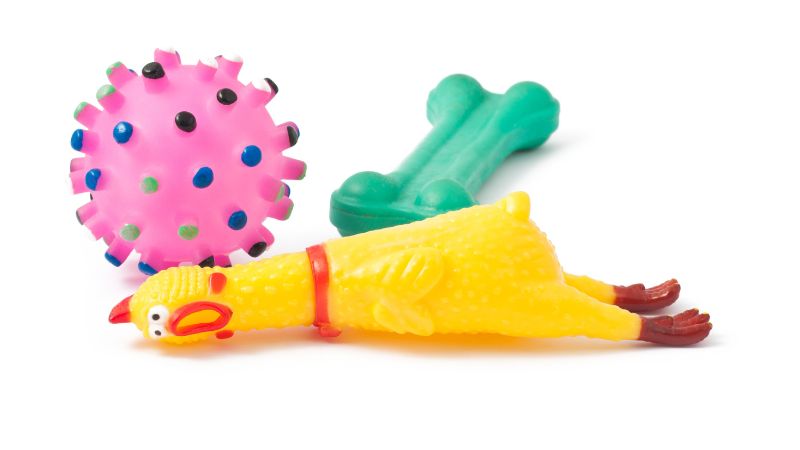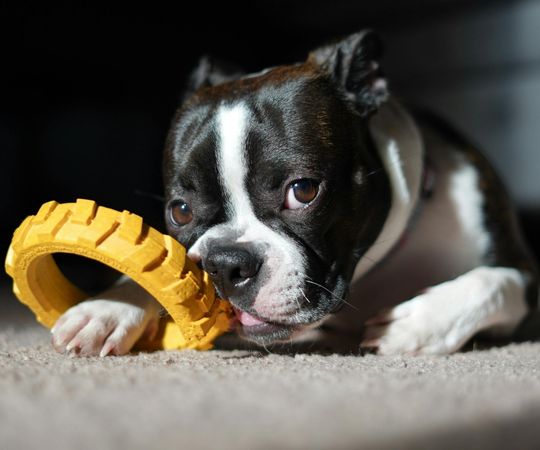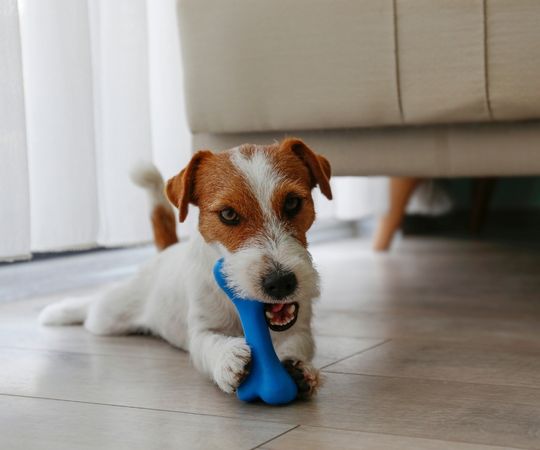Have you ever wondered why your furry friend goes crazy for those noisy squeaky toys? It’s not just random – there’s actually some cool science behind it!
Let’s dive into the fascinating reasons behind your dog’s squeaky toy obsession and discover how these simple toys can bring so much joy and stimulation to your pet’s life.

The Science Behind the Squeak
Dogs’ fascination with squeaky toys goes deeper than simple fun. The high-pitched sounds trigger something in your dog’s brain that makes these toys irresistible favorites.
Your dog has amazing hearing abilities that far exceed your own. Dogs can hear sounds at frequencies up to 65,000 Hz, while humans top out around 20,000 Hz. This makes them incredibly sensitive to high-pitched squeaks.
The squeaky sound from toys falls into a frequency range that dogs find particularly attention-grabbing. It’s similar to the sound small prey might make when caught.
Your dog’s ears are built with 18 different muscles that allow them to locate sounds with incredible precision. When a toy squeaks, your dog can pinpoint exactly where it’s coming from, making the play experience more engaging.
Why Do Dogs Like Squeaky Toys?
Dogs of all shapes and sizes seem drawn to squeaky toys. These noisy playthings capture their attention like few other toys can. The appeal goes much deeper than just the fun noise they make.
Hunting Instincts in Domestic Dogs
Your dog’s love for squeaky toys connects directly to their wild ancestry. Even though dogs have been domesticated for thousands of years, they still carry instincts from their wolf ancestors.
The high-pitched squeak mimics the sound that small prey animals make when caught.
When your dog bites down on a squeaky toy and hears that noise, they’re experiencing a kind of satisfaction that taps into their predatory nature. This explains why many dogs will “kill” the toy by removing the squeaker.
Some breeds with stronger hunting backgrounds, like terriers and retrievers, may show more intense interest in squeaky toys.
Your dog isn’t being aggressive when they shake or “kill” the squeaky toy – they’re just following natural instincts that have been part of their DNA for centuries.
Curiosity and Exploration
Dogs are naturally curious animals, and strange sounds immediately grab their attention. The unexpected noise from a squeaky toy triggers your dog’s curiosity and encourages exploration.
The unpredictable nature of the squeak makes these toys particularly interesting. Your dog never knows exactly when the squeak will happen, which keeps them engaged and coming back for more.
This element of surprise creates a more dynamic play experience. Unlike static toys that don’t change or respond, squeaky toys provide immediate feedback to your dog’s actions.
Young puppies are especially drawn to squeaky toys as they learn about their environment through sound and touch. The toys help them develop their senses and understand cause and effect – “when I bite here, it makes this noise.”
Interactive Play and Mental Stimulation
Squeaky toys provide mental challenges that keep your dog’s mind active. The connection between their actions (biting or pressing) and the result (the squeak) creates a rewarding feedback loop.
This cause-and-effect relationship helps keep your dog mentally engaged. They learn that specific actions produce specific results, which is stimulating for their brain.
Many dogs will experiment with different ways to make the toy squeak. They might use their paws, mouth, or even their body weight to produce the sound. This problem-solving is excellent mental exercise.
The engagement factor of squeaky toys makes them useful tools for training. You can use them as rewards or to capture attention during training sessions.
Interactive play with these toys can also strengthen your bond with your dog, especially when you participate in games of fetch or tug using the squeaky toy.
Sensory Stimulation and Engagement
Dogs experience the world differently than humans do, with their senses of hearing and smell being particularly important. Squeaky toys engage multiple senses at once.
The high-pitched sound of a squeaker falls within a frequency range that dogs find naturally stimulating. Your dog can hear sounds at much higher frequencies than you can, making these toys especially interesting to them.
Beyond sound, many squeaky toys also have interesting textures, smells, and tastes. Rubber toys might have a distinct smell, while plush toys offer a satisfying texture to bite.
This multi-sensory experience creates a more enriching playtime. When your dog engages with a squeaky toy, they’re getting visual, audio, and tactile stimulation all at once.
For some dogs, the squeak itself becomes a reward for their play behavior, encouraging them to continue interacting with the toy.
Choosing Safe Squeaky Toys for Your Pooch
When selecting squeaky toys for your dog, safety should be your top priority. The right toy will keep your pup happy while avoiding health risks.
The Importance of Durability
Durable toys are essential for your dog’s safety. When squeaky toys break apart, they can become dangerous choking hazards.
Look for toys made from tough rubber or reinforced fabric that can withstand your dog’s chewing style.
Heoupet now offers “tough” or “indestructible” options specifically designed for aggressive chewers.
Regularly check your dog’s toys for damage. Throw away any toys with tears, loose parts, or exposed squeakers immediately.
For larger dogs or power chewers, avoid plush squeaky toys. Instead, choose solid rubber toys with embedded squeakers that are harder to remove.
Non-Toxic Materials and Dog Health
The materials in your dog’s squeaky toys matter just as much as durability. Many cheap toys contain harmful chemicals that can make your dog sick.
Look for toys labeled “non-toxic” or “BPA-free.” High-quality toys might cost more, but they protect your dog from dangerous substances.
Materials to avoid:
- Toys with lead or phthalates
- Products with strong chemical smells
- Toys manufactured in countries with loose safety standards
Better alternatives:
- Natural rubber toys
- Organic cotton plush toys
- Products made specifically for pets (not repurposed children’s toys)
Clean your dog’s toys regularly to prevent bacteria buildup. Most rubber toys can go in the dishwasher, while fabric toys often handle a gentle wash cycle.
Conclusion
From the simple squeak to the wag of a tail, these squeaky toys are more than just playthings. They tap into the very essence of what makes dogs tick, blending ancient instincts with modern fun. So go ahead, let the games begin and watch the joy unfold.



